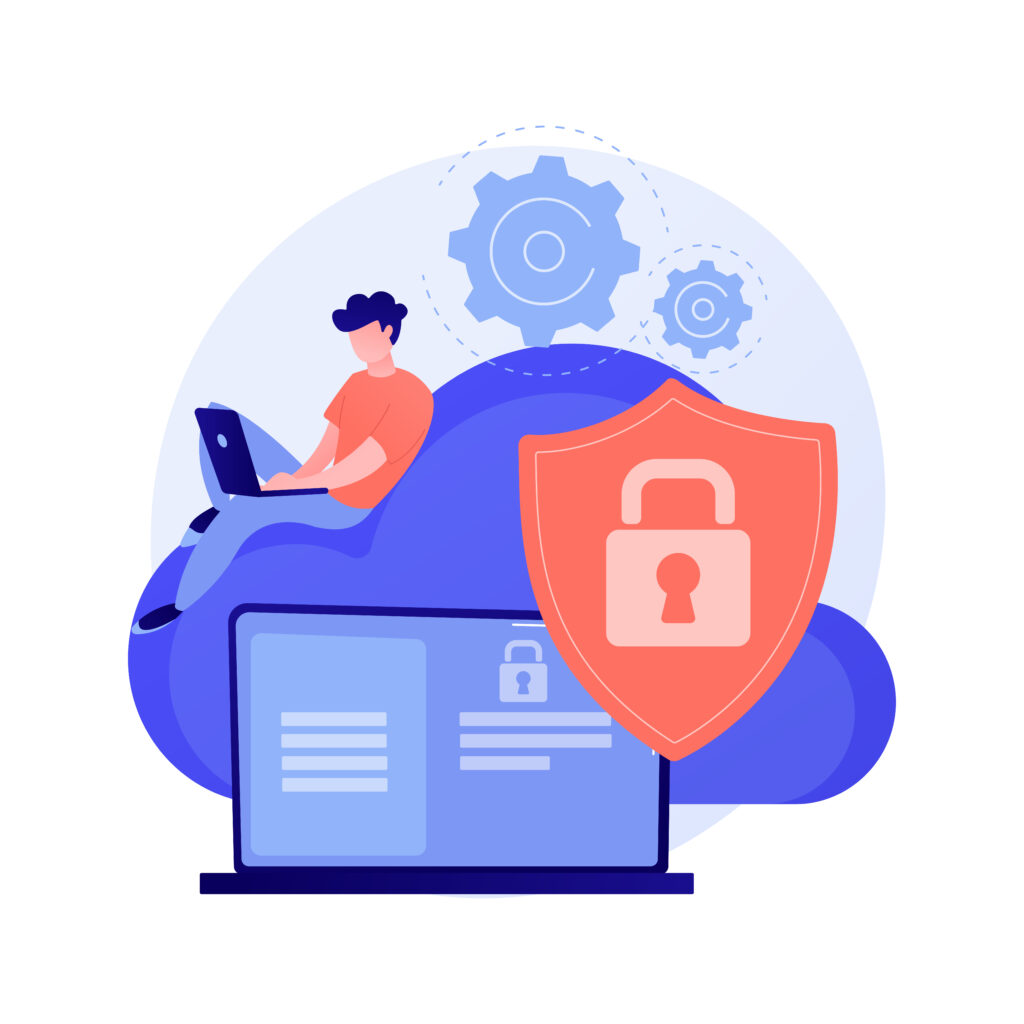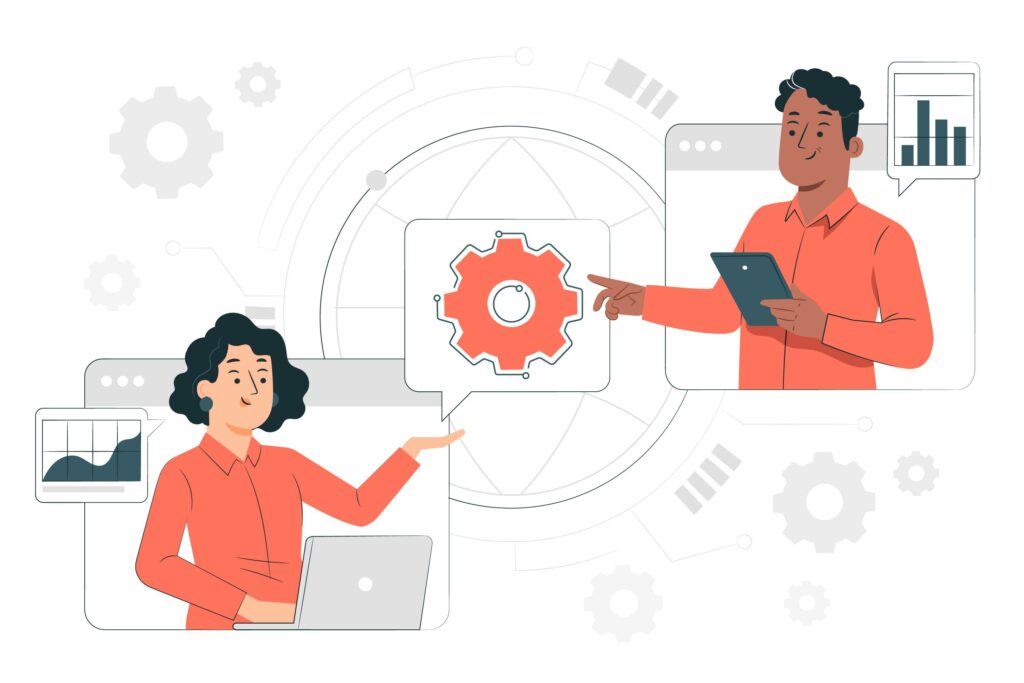There are many key components of devsecops, which all combined together to make it an amazing tool. DevSecOps tackles the challenges of fast-paced software markets by prioritizing security testing early on, called “shifting security left.” This proactive method stops costly mistakes and prevents vulnerabilities from becoming major issues.
It’s seen as an evolution of DevOps, promoting teamwork between developers and security specialists. By making security a natural part of daily tasks, DevSecOps finds a sweet spot between speed and safety, all while keeping things efficient with automation.
What is DevSecOps?
DevSecOps stands for development, security, and operations, emphasizing the integration of security throughout the software development cycle. It distributes security responsibilities among development, security, and ITOps teams.
Principles of DevSecOps — Addressing Challenges
Traditionally, development and security teams clashed, with developers prioritizing innovation and speed, while security teams emphasized security and compliance. Developers often saw security as a bureaucratic hurdle, rolling their eyes at last-minute security checks before product release.
This delayed discovery of security flaws within the production environment, requiring developers to pause new feature development to implement security fixes, resulting in increased time and costs.

DevSecOps promotes collaboration between development, operations, testing, and security teams to identify security issues earlier in the development process. This ensures uninterrupted development, leading to the creation of safer, higher-quality applications through a faster and more efficient workflow.
For IT security professionals, DevSecOps provides recognition and involvement from the project’s inception, positioning them as leaders in integrating security. Developers should also embrace DevSecOps, acknowledging that security is integral to software quality and prioritizing it throughout development, ultimately benefiting their customers.
Aim of DevSecOps and its key components
DevSecOps aims to tackle emerging issues in a cost-effective manner, thereby accelerating the development of secure software and a robust codebase. Integrating an additional security layer throughout the process addresses commonly overlooked issues, thwarting data breaches and cyber attacks.
Embracing DevSecOps means prioritizing security right from the start of the development cycle. This entails implementing security measures at every phase of software development, from planning and coding to testing and deployment.

The primary objective of DevSecOps is to foster a culture of continuous security enhancement. This involves actively addressing security concerns throughout the software’s lifecycle, enabling organizations to proactively identify and address vulnerabilities, reduce the risk of cyber threats, and uphold system integrity, confidentiality, and availability.
Furthermore, DevSecOps encourages collaboration among development, security, and operations teams. By dismantling silos and promoting communication and cooperation, organizations ensure that all stakeholders work together toward the common goal of building secure and dependable software.
What are the key components of DevSecOps?
Maintaining security is indispensable, and treating it as an afterthought only decelerates progress. To ensure security at every step, organizations must approach DevSecOps through these vital components:
1. App/API Inventory
While inventorying everything is essential, it doesn’t inherently enhance security. The key is to automate the discovery, profiling, and continuous monitoring of code across the portfolio. A pragmatic approach to API security involves getting close to the code, instrumenting every stack layer. Some products operate at various layers, including network, host, application, container, and API.
2. Custom Code Security:
Throughout development, testing, and operations, continuous monitoring of software for vulnerabilities is necessary. Frequent code delivery ensures rapid identification of vulnerabilities with each update.

Security teams contribute by embracing DevOps practices and integrating them into security, such as delivering security capabilities in small, frequent installments and automating security tasks whenever possible. Developers, on the other hand, must educate themselves on security standards, requirements, threat awareness, and tools.
3. Environment Security:
Secure DevOps environments by safeguarding tools, access, and architecture. It’s critical for security teams to lead in selecting and verifying the configurations of all system security tools to ensure their proper functioning before widespread use.
Identification and access management should be taken seriously, with security teams controlling access to DevOps architecture and data to protect credentialed usage throughout the development pipeline.
Tactics like multi-factor authentication (MFA), least-privileged access, and just-in-time temporary access to high-level privileges help control access. CI/CD pipelines should be segregated to limit lateral movement, and all unnecessary accounts with access to DevOps tools should be eliminated.
4. Infrastructure Security:
With DevSecOps, security and compliance controls are integrated into the infrastructure to cover all environments, including the cloud. Regular security monitoring, vulnerability scanning, and patching of workstations and servers are essential. Automated tools scan all code to ensure no secrets when checking into repositories.
New virtual machines (VMs) and containers automatically receive properly configured controls to withstand automatic rebuilds. Centralized storage systems house DevOps tools and secrets, all protected with encryption and multi-factor authentication (MFA).
5. Open-Source Security:
This key component of devsecops refers to security. Open source software (OSS) often contains security flaws, making it crucial to have a comprehensive security strategy that includes tracking OSS libraries and reporting vulnerabilities and license violations.
6. Automation:
Automation is a crucial aspect of a successful DevSecOps initiative. It enables the integration of security measures into the development process and ensures that security doesn’t burden development teams.

Security testing and analysis can be seamlessly integrated into CI/CD pipelines to deliver secure software without stifling innovation and development workflows.
7. Testing:
While security tests are typically performed as the final step before product release, they ideally should occur throughout the entire development process. Techniques such as static application security testing (SAST), dynamic application security testing (DAST), penetration testing, Red Teaming, and Threat Modeling are all effective testing regimens.
The latter approaches, in particular, offer insights into code from a hacker’s perspective without disrupting the production environment.
8. Collaboration:
This process begins with instilling a shared-responsibility mindset regarding security across the organization, backed by executive leadership endorsement. Collaboration centers around the common goal of developing and releasing the highest-quality product as fast as possible while meeting all security and compliance requirements.
Security teams play their part by familiarizing themselves with DevOps practices and integrating them into security, such as delivering security capabilities in small, frequent installments and automating security tasks whenever possible. Developers should learn about security best practices, requirements, threat awareness, and tools.
9. Communication:
This is one of the key components of DevSecOps. Bridging the communication gap between developers and security professionals is essential. Security professionals must articulate the need for controls and the benefits of compliance in terms that developers understand. For instance, discussing security risks in terms of project delays and unplanned extra work for developers highlights the importance of addressing those risks.

Developers should clearly understand their security-related responsibilities to fully embrace their role as contributing partners in creating a more secure and compliant organization. Responsibilities include being aware of potential security risks, writing code with security best practices in mind, and conducting vulnerability testing throughout development, fixing flaws as they’re discovered.
Challenges in DevSecOps
The foundation of any effective security strategy comprises three fundamental elements: People, Procedures, and Technology. The DevSecOps methodology follows the same principle. Its successful execution hinges on enhanced cooperation among Development, Security, and Operations teams.
However, it’s common to encounter a division between DevSecOps security and development teams during its implementation. Businesses striving to adopt DevSecOps frequently encounter collaboration hurdles, alongside the subsequent challenges:
1. People Obstacle
Initiating any transformation involves people; in DevOps contexts, people are the linchpin of its enactment. Forming a unified Dev and Ops team is already demanding, and incorporating a third security team, often accustomed to working independently, adds further intricacy.
2. Process Hurdle
Speed, Security, and Quality stand as the primary DevSecOps benchmarks for an optimal product. Historically, security has remained an afterthought in product development. Thus, aligning security practices with DevOps principles presents a notable challenge.
3. Technology Barrier
The effective integration of security testing tools into the CI/CD pipeline is crucial for DevSecOps triumph. Embracing a proactive approach, utilizing tools for comprehensive security assessments, striving for extensive automation, and harnessing AI capabilities are indispensable for DevSecOps success.
With DevSecOps, the conventional and isolated mindset of project management dissipates, making it significantly challenging for threats to breach applications.
[Want to learn more about key components of DevSecOps? Click here to reach us.]
Conclusion
To sum up, DevSecOps relies on collaboration, automation, continuous monitoring, and risk evaluation as its core elements. Organizations can safeguard their software development processes and enhance application and system protection by implementing these components effectively. With the support of an advanced team in DevSecOps such as Bobcares you can have access to all of the key components of DevDecOps.
PREVENT YOUR SERVER FROM CRASHING!
Never again lose customers to poor server speed! Let us help you.
Our server experts will monitor & maintain your server 24/7 so that it remains lightning fast and secure.








0 Comments